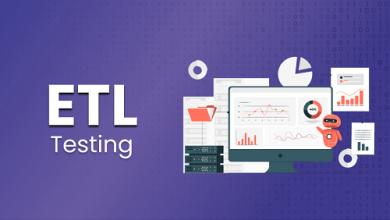Taking a Closer Look at the Basic Components of an Electronic System

When most people think of electronic systems, they usually think of the large and complex systems that are used in businesses and industries. It may sound complicated and confusing, especially if you have never studied electronics before. However, understanding the basic components of an electronic system is not that difficult, and it can be quite interesting and useful in everyday life. It can help you better understand how electronic devices work, and it can also be helpful in troubleshooting problems with electronic devices.
So, to help you wrap your mind around the basics of these systems, this article will take a close look at the essential components every electronic system is composed of. We will examine each component in detail, explaining what it does and how it works so you can get a better understanding of electronic systems as a whole.
The Power Supply
The power supply is the heart of any electronic system. It provides the necessary power to all of the other components in the system so they can function properly. Without a power supply, an electronic system would not be able to operate.
There are two main types of power supplies: direct current (DC) and alternating current (AC). DC power supplies provide a constant flow of electricity, while AC power supplies provide an electrical current that alternates between positive and negative voltages. The main difference between these two types of power supplies is the way they deliver electrical power to the system.
With a DC power supply, electricity flows in one direction only, from the positive terminal to the negative terminal. This type of power supply is used in most electronic devices because it is more efficient and easier to control than an AC power supply. An AC power supply, on the other hand, delivers electricity in both directions, alternating between positive and negative voltages. This type of power supply is typically used in larger electronic systems because it can provide more power than a DC power supply.
The Voltage Regulator
The voltage regulator is a component that is used to ensure that the voltage in the system remains at a constant level, even if the power supply fluctuates. Every Power Electronics system should have a voltage regulator to protect the components from damage that can be caused by too much or too little voltage. Without a voltage regulator, the voltage in an electronic system would fluctuate along with the power supply, which could cause damage to the components or cause the system to malfunction. The voltage regulator is typically a separate component from the power supply, but it can also be integrated into the power supply itself.
There are two main types of voltage regulators: linear voltage regulators and switching voltage regulators. Linear voltage regulators work by passing the current through a resistor, which lowers the voltage to the desired level. Switching voltage regulators work by using transistors to switch the current on and off very quickly, which also lowers the voltage to the desired level.
The Capacitor
The capacitor is a component that stores electrical energy in the form of an electric field. It is used to store energy in the system so it can be used when needed. Without a capacitor, the electronic system would not be able to store energy and would have to rely on the power supply for all of its power needs.
A capacitor typically consists of two metal plates that are separated by an insulating material called a dielectric. When a voltage is applied to the capacitor, the electric field is created, which stores the electrical energy. The amount of energy that can be stored in a capacitor depends on the size of the plates, the dielectric constant of the dielectric, and the voltage that is applied to the capacitor.
The Motherboard
The motherboard is the main circuit board in an electronic system. It is where all of the other components in the system are connected. The motherboard serves as a central hub that allows communication and data exchange between all of the other components in the system.
Every electronic system has a motherboard, and the size and complexity of the motherboard depend on the specific system. For example, a simple electronic system, such as a digital watch, might have a very small and simple motherboard. A more complex system, like a computer, would have a much larger and more complex motherboard that has many more connections. The main components of a motherboard are the central processing unit (CPU), the memory, the input/output (I/O) ports, and the expansion slots.
The Switch
The switch is a component that is used to open and close the circuit so that current can flow through it. Without a switch, the current would not be able to flow through the circuit and the electronic system would not be able to function. There are many different types of switches, but the most common type is the push-button switch.
Push-button switches are typically used to control the power supply in an electronic system. For example, the power button on a computer is a push-button switch that turns on the power supply when it is pressed. The main advantages of push-button switches are that they are easy to use and they don’t require a lot of space. However, they can only be used to control one circuit at a time.
The Resistor
The resistor is a component that slows down the flow of current in a circuit. Without a resistor, the current would flow too quickly and could damage the components in the circuit. The amount of resistance in a circuit is measured in ohms.
Resistors are used to control the current in a circuit so that it doesn’t flow too quickly. For example, if a circuit has a lot of resistance, it will take longer for the current to flow through it. This is why resistors are used to control the speed of motors and other moving parts in an electronic system.
The Transistor
The transistor is a semiconductor device that is used to amplify or switch electrical signals. Without a transistor, electronic systems would not be able to function. Transistors are made from materials like silicon and germanium.
There are two types of transistors: N-type and P-type. N-type transistors are made from materials like silicon and have three terminals. P-type transistors are made from materials like germanium and have two terminals.
Transistors can be used as amplifiers or switches. Amplifiers are used to increase the strength of a signal. For example, if an audio signal is too weak to be heard, an amplifier can be used to make it louder. Switches are used to turn a circuit on or off. For example, the power button on a computer is a switch that turns the power supply on or off.
Each of these components is essential for the proper functioning of an electronic system. As you can see, each component has a specific purpose and is vital to the overall operation of an electronic system. Understanding these basic components is essential for anyone who wants to learn more about how electronic systems work. And by doing so, you’ll be better prepared to troubleshoot or even repair any electronic system you may come across.




